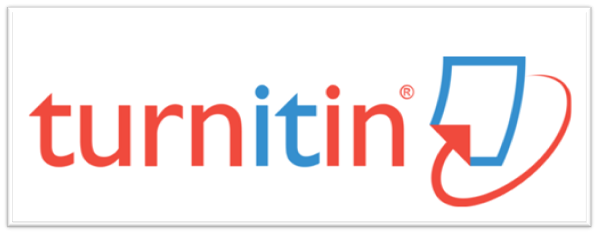IMPLEMENTASI CLEAN ARCHITECTURE MENGGUNAKAN METODE AGILE PADA PENGEMBANGAN APLIKASI ANDROID: STUDI KASUS BUANG.IN
DOI:
https://doi.org/10.33884/jif.v12i02.9222Keywords:
Android, Agile, SDLC, Clean Architecture, TrashAbstract
Waste management presents significant challenges that require innovative strategies to improve efficiency and sustainability. Application development has been identified as a potential solution. However, the quality of application code often poses a major hurdle in maintenance and adaptation to change. This study aims to improve the code quality and maintenance of the Buang.in application through the implementation of Clean Architecture. The hope is that implementing Clean Architecture will make the Buang.in application more structured, clear and easy to understand, as well as overcome existing maintenance challenges. In addition, this research aims to provide effective waste management solutions by introducing flexible development options. The limitations of this study include analyzing and improving code quality in the Buang.in application, with a particular focus on implementing Clean Architecture as a code maintenance solution. Changes to the core functionality of the application are not the main focus. By combining Agile and Scrum methodologies, this research adopts adaptive and collaborative software development practices. Agile with Scrum allows development teams to adapt to evolving requirements and prioritize tasks based on highest business value. Therefore, integrating Agile and Scrum in this research ensures that the Buang.in application development process remains efficient and responsive to changes throughout the development cycle.
References
Presiden Republik Indonesia, “Undang-undang (UU) tentang Pengelolaan Sampah,” Peraturan BPK, 2008.
KEMENKO PMK, “7,2 Juta Ton Sampah di Indonesia Belum Terkelola Dengan Baik,” Kementrian Koordinator Bidang Pembangunan Manusia dan Kebudayaan Republik Indonesia, 2023. https://www.kemenkopmk.go.id/72-juta-ton-sampah-di-indonesia-belum-terkelola-dengan-baik
N. Adisty, “Mengulik Perkembangan Penggunaan Smartphone di Indonesia,” GoodStats, 2022. https://goodstats.id/article/mengulik-perkembangan-penggunaan-smartphone-di-indonesia-sT2LA#:~:text=Sementara%2C awal tahun 2022 ini,yang sama di tahun sebelumnya.
M. H. Badrudduja and R. E. Putra, “Penerapan Clean Architecture pada Aplikasi Pemesanan Makanan menggunakan Metode Slope One Algorithm,” J. Informatics Comput. Sci., vol. 3, no. 04, pp. 506–514, 2022, doi: 10.26740/jinacs.v3n04.p506-514.
T. B. Duy, “Reactive Programming and Clean Architecturein Android Development,” no. April, pp. 1–47, 2017.
Aflah Taqiu Sondha, Umi Sa’adah, Fadilah Fahrul Hardiansyah, and Maulidan Bagus Afridian Rasyid, “Framework dan Code Generator Pengembangan Aplikasi Android dengan Menerapkan Prinsip Clean Architecture,” J. Nas. Tek. Elektro dan Teknol. Inf., vol. 9, no. 4, pp. 327–335, 2020, doi: 10.22146/jnteti.v9i4.572.
M. Prabowo, METODOLOGI PENGEMBANGAN SISTEM INFORMASI. LP2M Press IAIN Salatiga, 2020.
S. P. Budiarto and M. Dedi, “Desain Dan Perancangan Aplikasi Jemput Sampah Online Desa Rejosari Menggunakan Agile Development,” JATISI (Jurnal Tek. Inform. dan Sist. Informasi), vol. 7, no. 3, pp. 531–545, 2020, doi: 10.35957/jatisi.v7i3.529.
Kementerian Pendidikan Kebudayaan Riset dan Teknologi Republik Indonesia, “Kamus Besar Bahasa Indonesia,” Badan Pengembangan dan Pembinaan Bahasa, 2016. https://kbbi.kemdikbud.go.id/entri/aplikasi
A. Juansyah, “Pembangunan Aplikasi Child Tracker Berbasis Assisted – Global Positioning System ( A-GPS ) Dengan Platform Android,” J. Ilm. Komput. dan Inform., vol. 1, no. 1, pp. 1–8, 2015.
S. Pratama, S. Ibrahim, and M. A. Reybaharsyah, “Jurnal Penggunaan Metode Scrum Dalam Membentuk Sistem Informasi Penyimpanan Gudang Berbasis Web,” Intech, vol. 3, no. 1, pp. 27–35, 2022, doi: 10.54895/intech.v3i1.1192.
JetBrains, “FAQ: What is Kotlin,” 2023. https://kotlinlang.org/docs/faq.html
R. C. Martin, “Clean Architecture: A Craftsman’s Guide to Software Structure and Design.,” 2017.
M. B. Sinatria, Oman Komarudin, and Kamal Prihamdani, “Penerapan Clean Architecture Dalam Membangun Aplikasi Berbasis Mobile Dengan Framework Google Flutter,” INFOTECH J., vol. 9, no. 1, pp. 132–146, 2023, doi: 10.31949/infotech.v9i1.5237.
Ms. Prof. Dr. Suryana, “Metodologi Penelitian : Metodologi Penelitian Model Prakatis Penelitian Kuantitatif dan Kualitatif,” Univ. Pendidik. Indones., pp. 1–243, 2012, doi: 10.1007/s13398-014-0173-7.2.
Downloads
Published
How to Cite
Issue
Section
License
Copyright (c) 2024 JURNAL ILMIAH INFORMATIKA

This work is licensed under a Creative Commons Attribution 4.0 International License.






















